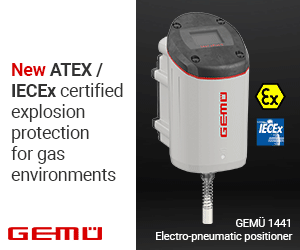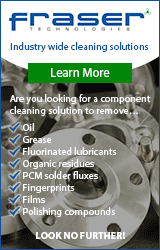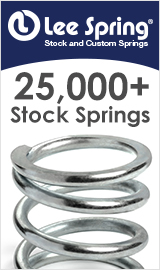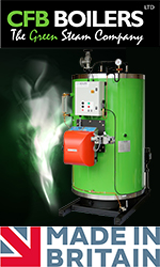High Performance Solutions for EMI Shielding Problems
Fothershield’s range of EMI shielding and thermal interface materials give the EMC engineer plenty of choice when looking to solve EMC problems.
At board level shielding cans may be selectively applied to the problem area of the board either by soldering using Fothershield’s lead free solder, solder pastes and flux, or by using a fence to hold the can in place. Thermally conductive gap fillers dissipate heat away from sensitive electronic devices by conducting the heat away to a heat sink, whilst conformal coatings protect the board from harsh environmental conditions such as salt spray, moisture and chemicals.


Enclosures are often made from plastics which offer no intrinsic protection from EMI or RFI. To achieve electromagnetic compatibility inner surfaces of plastic enclosures are coated with conductive or shielding coatings.
The coatings are pigmented with highly conductive fillers to provide effective EMI/RFI shielding over a broad frequency range. Carbon offers low frequency shielding and is used in applications such as metal detectors, for shielding musical instruments or grounding applications. Nickel gives a good shielding performance together with excellent corrosion resistance making it suitable for marine environments, and is a good standard choice for shielding plastic enclosures or satellite dishes. Silver Coated Copper offers superior shielding at higher frequencies, and is frequently used for coating enclosures, and as an undercoat in electroplating applications. Silver provides the highest shielding and corrosion resistance, is suitable for harsh marine environments and mission critical applications.

The coatings are available in 3 chemistries, Acrylic, Water Based Urethane and Epoxy.
Acrylic conductive coatings are widely used on electronic enclosures, satellite dishes and board level applications, are easy to apply and adhere well to many surfaces. They are an easy to use solvent based system which does not require heat cure, and does not contain xylene or toluene. With strong adhesion to acrylic, ABS, polycarbonate and other injection moulded plastics, the coatings provide a smooth, durable and abrasion resistant conductive coating. The acrylic coatings are commonly used on electronic enclosures, medical equipment, drones and communication devices.
Water based conductive urethanes have low volatile organic compounds, and are the only choice for architectural applications as they have no noxious vapours and are non-flammable with no heat cure necessary. Adhering well to plastics, wood, metal and ceramics, the water based coatings bond well to drywall and can be painted over with common latex paints. The water based coatings may be used on ceilings, walls and doors to protect rooms containing sensitive electronic equipment such as surgical rooms, recording studios, and server rooms from interference from mobile phones, CB, TV, AM and FM signals.

Epoxy conductive coatings are a two part system, curing in 24 hours at room temperature. The cured coatings are smooth and extremely hard, are mar and scratch resistant with strong chemical, abrasion and impact resistance, together with strong adhesion to chemically resistant plastics and other difficult to bond to materials. The epoxy coatings are particularly suitable to military, aerospace, automotive and oil and gas industries and can also be used on aluminium flanges.
Conductive acrylic pens are ideal for repairing or making conductive traces on printed circuit boards, or by the hobbyist. The pens dispense acrylic lacquer pigmented with carbon, nickel or silver flake and are designed for use on smooth, hard and flat surfaces.
Gaskets are often required to seal the gap around enclosure lids. Beryllium copper Be/cu fingerstrip gaskets give extremely high electromagnetic and radio frequency shielding effectiveness, and are perfect where high attenuation combined with mechanical strength and fatigue resistance is required. Fothershield’s comprehensive portfolio of profiles gives the engineer a good choice of mounting options, shapes and sizes to choose from.

Where low closure forces are required, conductive fabric over foam gaskets offer both EMI shielding and dust and moisture control. Made from a taffeta or rip-stop polyester fabric coated with a base layer of highly conductive copper topped with a nickel coating, the gaskets are easy to cut to size and are available in a wide range of shapes and sizes. The coated fabric is also available separately in roll form, or as a tape used for cable shielding or sealing seams.

Knitted wire mesh gaskets are ideal for use of uneven surfaces such as sheet metal fabrications. The gaskets can be produced as a pure metal gasket, or two or more layers of mesh over an elastomer core. Knitted gaskets are often used when compression of the gasket is frequently applied and released, such as enclosure doors and inspection panels.

Silicones and fluorosilicones loaded with a range of conductive metal particle fillers are used for both shielding and environmental protection. Developed mainly for military applications, the conductive elastomers are used where small gaps and environmental protection is necessary. Duo-seal gaskets have been developed to provide both environmental sealing and high levels of EMC shielding and eliminates the potential for galvanic corrosion associated with highly conductive materials used with dissimilar metals.

Aluminium honeycomb vents can be mounted on to most EMI shielding enclosures to provide airflow over cooling fans and can be fitted with a conductive gasket to improve shielding effectiveness. Dust filters and kick plates may also be fitted.

With a wealth of experience, combined with the exceptional customer service you deserve, Fothershield are on hand to help you find the perfect solution to your EMI shielding problem.
Fothershield
Unit 3 Transpennine Trading Estate
Gorrells Way
Rochdale
Lancs
OL11 2PX
E info@fothershield.co.uk
T +44 (0)1706 758811
W www.fothershield.co.uk




























































































































